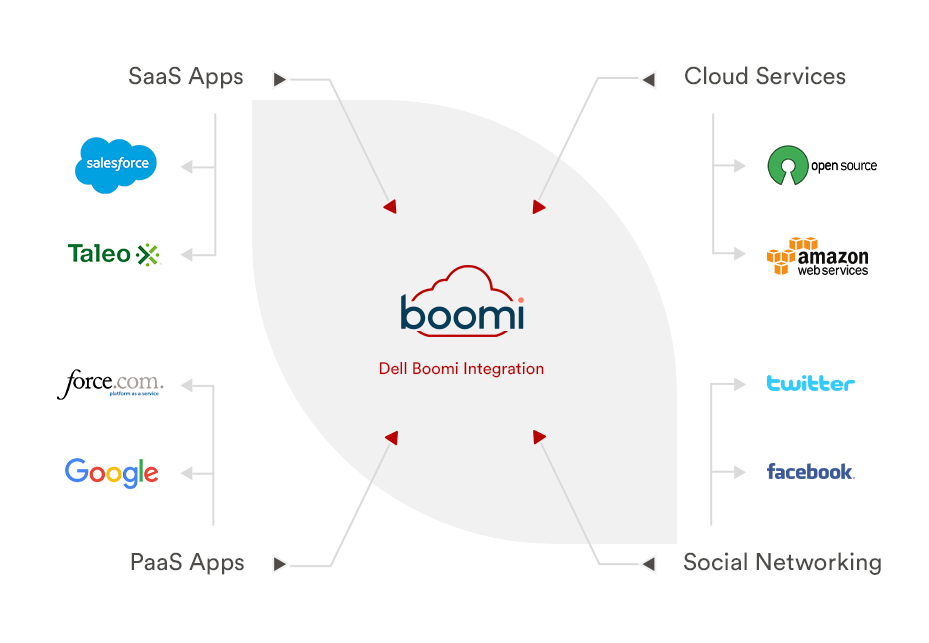
In the evolving landscape of digital transformation, integrating diverse applications and data sources seamlessly is crucial for business efficiency and innovation. Boomi integration services offer a comprehensive platform to address these integration challenges, providing various integration patterns to suit different business needs. This guide explores the key integration patterns available in Boomi, helping you choose the right approach for your specific requirements.
Understanding Boomi Integration Services
Boomi Integration Services are designed to facilitate seamless connectivity between on-premises and cloud-based applications, data sources, and business processes. As an integration platform as a service (iPaaS), Boomi provides a unified environment to design, deploy, and manage integrations using a low-code approach. This platform supports multiple integration patterns, allowing businesses to select the most suitable method for their unique scenarios.
Key Integration Patterns in Boomi
Point-to-Point Integration
What is Point-to-Point Integration?
Point-to-point integration involves creating direct connections between two applications or systems. This pattern is straightforward and typically used for simple integration requirements where only a few systems need to communicate.
Advantages
Simplicity: Easy to set up and manage, requiring minimal configuration.
Low Cost: Lower initial costs due to the limited scope of integration.
Disadvantages
Scalability Issues: As the number of integrated systems grows, managing multiple point-to-point connections can become complex and cumbersome.
Maintenance Challenges: Changes in one system may require updates to multiple integrations.
Use Cases
Connecting an e-commerce platform with a payment gateway.
Hub-and-Spoke Integration
What is Hub-and-Spoke Integration?
In hub-and-spoke integration, a central hub facilitates communication between various systems (spokes). This pattern centralizes integration logic and data transformation processes, streamlining management and scalability.
Advantages
Centralized Management: Simplifies monitoring and maintenance by consolidating integration logic in a single hub.
Scalability: Easier to add new systems and services without disrupting existing integrations.
Disadvantages
Single Point of Failure: The hub becomes a critical component; if it fails, the entire integration can be affected.
Initial Setup Complexity: More complex to set up initially compared to point-to-point integrations.
Use Cases
Integrating multiple enterprise applications (ERP, CRM, HR) with a central data warehouse.
Connecting various IoT devices to a central monitoring and analytics platform.
Publish-Subscribe (Pub-Sub) Integration
What is Pub-Sub Integration?
Publish-subscribe integration is an event-driven pattern where systems publish events to a central broker, and subscribing systems receive relevant events. This decouples the sending and receiving systems, enhancing flexibility and scalability.
Advantages
Loose Coupling: Reduces dependencies between systems, allowing for independent evolution.
Real-Time Processing: Supports real-time data processing and event handling.
Disadvantages
Complexity in Event Management: Managing event schemas and ensuring reliable message delivery can be challenging.
Latency: Potential for increased latency due to intermediate event processing.
Use Cases
Real-time stock trading platforms where price changes are published and subscribed to by various systems.
Notification systems for real-time alerts and updates across multiple applications.
API-Led Integration
What is API-Led Integration?
API-led integration leverages APIs to connect systems and services. This pattern involves creating reusable APIs for accessing data and functionality, promoting modularity and reusability.
Advantages
Modularity: Promotes the creation of reusable components, reducing redundancy.
Flexibility: Facilitates the integration of diverse systems, including third-party services.
Disadvantages
Dependency on API Management: Requires robust API management to handle versioning, security, and performance.
Initial Development Effort: Higher initial effort to design and implement APIs.
Use Cases
Integrating legacy systems with modern applications via APIs.
Enabling mobile applications to access backend services through API gateways.
Hybrid Integration
What is Hybrid Integration?
Hybrid integration combines multiple integration patterns to address complex business requirements. This approach leverages the strengths of different patterns to create a cohesive and flexible integration architecture.
Advantages
Versatility: Combines the best aspects of various patterns to meet diverse needs.
Scalability and Flexibility: Supports complex integration scenarios and evolving business requirements.
Disadvantages
Complexity: Requires careful planning and management to ensure seamless operation.
Higher Cost: Potentially higher costs due to the use of multiple integration technologies and patterns.
Use Cases
Large enterprises with diverse systems requiring a mix of real-time, batch, and API-based integrations.
Mergers and acquisitions where integrating disparate IT landscapes is necessary.
Choosing the Right Integration Pattern
Assess Your Business Needs
Identify your specific integration requirements, considering factors such as the number of systems to be integrated, the complexity of data flows, and the desired level of real-time processing.
Evaluate Scalability and Flexibility
Consider how your integration needs may evolve over time. Choose a pattern that can scale with your business and adapt to changing requirements.
Consider Maintenance and Management
Evaluate the ease of managing and maintaining your integrations. Centralized patterns like hub-and-spoke may simplify management, while point-to-point integrations might become challenging to maintain as the number of connections grows.
Leverage Boomi’s Capabilities
Boomi integration services offer tools and features to support various integration patterns. Leverage Boomi’s pre-built connectors, low-code environment, and real-time monitoring to implement and manage your chosen pattern effectively.
Conclusion:
Selecting the right integration pattern is crucial for ensuring seamless connectivity, efficiency, and scalability in your business operations. Boomi integration services provide a versatile platform to implement various integration patterns, from simple point-to-point connections to complex hybrid architectures. By assessing your business needs, evaluating scalability, and leveraging Boomi’s capabilities, you can choose the most suitable integration pattern to meet your unique requirements. Embrace the power of Boomi Integration Services to drive innovation, enhance productivity, and achieve your digital transformation goals.